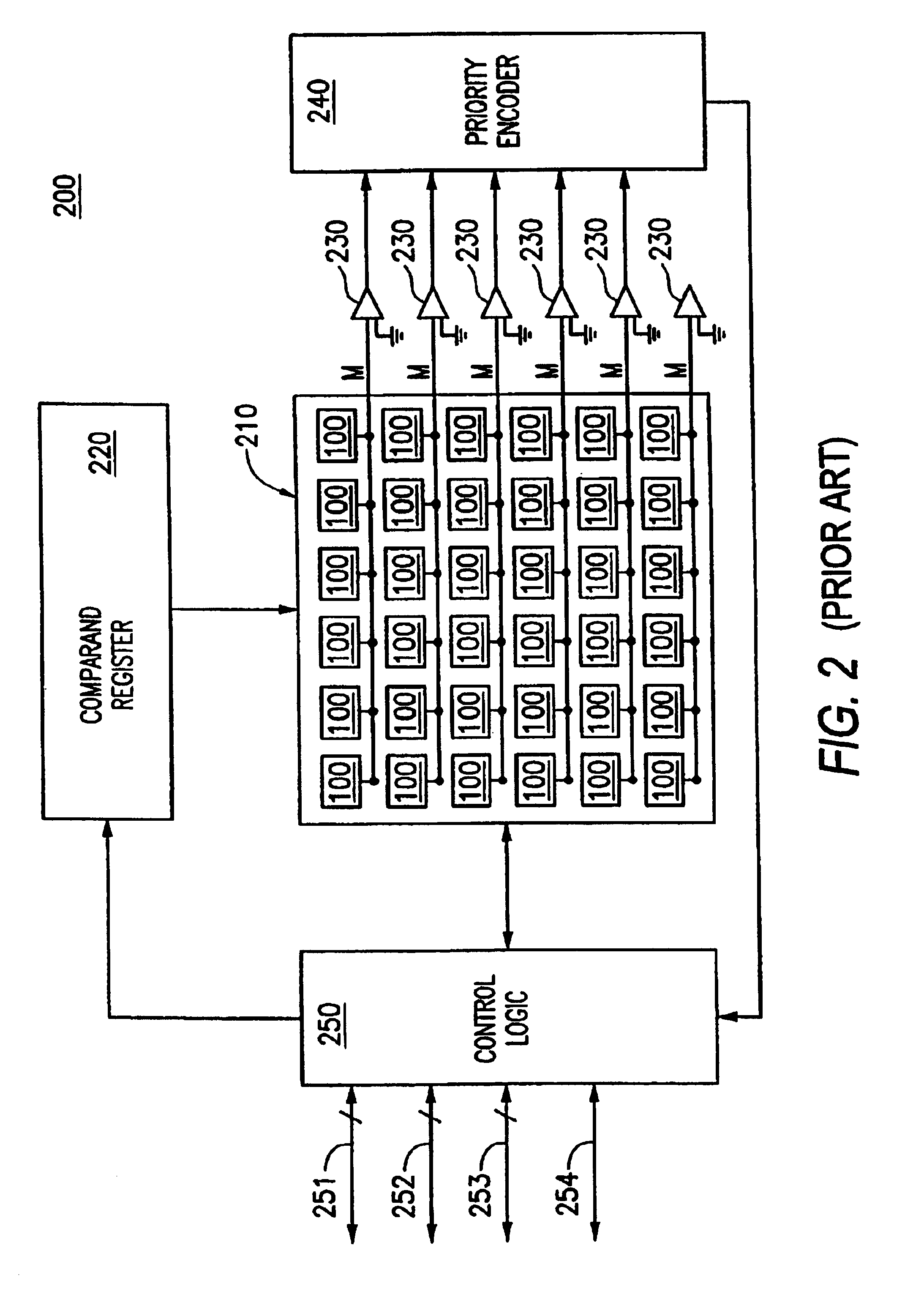Cutting CAM peak power by clock regioning
a clock region and cam technology, applied in the field of cam peak power reduction, can solve the problems of cam device b>200/b> having a peak power consumption which may be significantly higher, cam device b>200/b> having a significantly higher peak power consumption, etc., and achieve the effect of reducing the peak power consumption of the cam devi
- Summary
- Abstract
- Description
- Claims
- Application Information
AI Technical Summary
Benefits of technology
Problems solved by technology
Method used
Image
Examples
second embodiment
The second embodiment differs more from the first embodiment subsequent to clock cycles 5 and 5′, due to the changes in the number of, and operation of, the priority encoders. As a result, the timing diagram of FIG. 4B omits cycles 1-5 and 1′-5′ and spans only clock cycles 6-10 and 6′-10′. The processing which occurs during these cycles is now explained:
In clock cycle 6, priority encoders 240a1 and 240a2 each output their results to priority encoder 240a3. In clock cycle 6′, priority encoders 240b1 and 240b2 output their results to priority encoder 240b3. In clock cycle 7, priority encoder 240a3 outputs its result to priority encoder 240c. In clock cycle 7′, priority encoder 240b3 outputs its result to priority encoder 240c. No task is associated with clock cycle 8. In clock cycle 8′, priority encoder 240c outputs it result to control circuit 250″. In clock cycle 9, the control circuit 250″ outputs the final result of the search process (off-chip). No task is associated with clock c...
PUM
 Login to View More
Login to View More Abstract
Description
Claims
Application Information
 Login to View More
Login to View More - R&D
- Intellectual Property
- Life Sciences
- Materials
- Tech Scout
- Unparalleled Data Quality
- Higher Quality Content
- 60% Fewer Hallucinations
Browse by: Latest US Patents, China's latest patents, Technical Efficacy Thesaurus, Application Domain, Technology Topic, Popular Technical Reports.
© 2025 PatSnap. All rights reserved.Legal|Privacy policy|Modern Slavery Act Transparency Statement|Sitemap|About US| Contact US: help@patsnap.com



